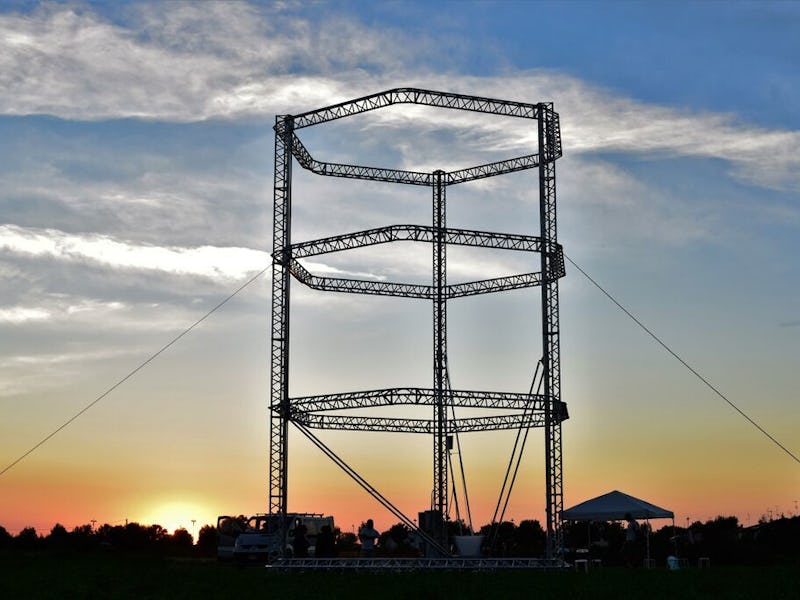This Towering 3D Printer Will Squirt You a Low-Cost Home
These waspy homes made of clay could shelter growing populations quickly.

Various scientists are working on 3D printing nerves, microscopes, glass, and even satellites. Large infrastructure, though, could be the next breakthrough in the field. According to WebUrbanist, the Italy-based World’s Advanced Saving Project (WASP) has recently revealed the world’s largest delta 3D printer that can make actual homes, BigDelta, at a three-day rally the WASP team called “Reality of a Dream.”
BigDelta stands 12 meters (39.3 feet) tall and is designed to build homes out of mud, clay, and tamarind plant fibers. The design takes inspiration from clay homes in Aït Benhaddou in Morocco, where the WASP team visited to learn more about the structures. The entire venture is ingenious and sustainable.
First tested on smaller models, BigDelta builds the homes layer by layer from the ground up. It pushes clay through its nozzle, which then rotates to evenly spread across the surface. Watching it create a smaller model shows that it’s not the fastest process ever, but it’s certainly more efficient than building a home by hand.
BigDelta appears to be exceptionally functional because of its portability. As a delta 3D printer, the accuracy and precision depend on the printer head. That printer head is a large nozzle that is supported by a lightweight steel frame. The entire printer can, thus, be collapsed and transported to wherever it is needed.
WASP can, therefore, potentially use BigDelta in various cities and countries across the world to build communities of clay homes.
A clever acronym, WASP also refers to the similarity between the BigDelta-created homes and wasps’ nests. The shape is structurally sound, coming to an almost conical point at the top, as well as simple and replicable. Although not meant for luxurious living, the WASP homes could offer housing to many who otherwise lack access to shelter. In a press release, the team said:
“By 2030, international estimates foresee a rapid growth of adequate housing requirements for over 4 billion people living with yearly income below $3,000. The United Nations calculated that over the next 15 years there will be an average daily requirement of 100,000 new housing units to meet this demand.”
It’s not yet clear when BigDelta will be brought to a larger, global stage. When it is, though, it’s likely to be quite affordable because it utilizes attainable natural resources. One thing’s for sure: It will bring a new, better meaning to living in a waspy neighborhood.